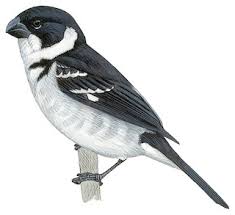Description
Wing-Barred Seedeater
The Wing-Barred Seedeater (Sporophila americana) is a small finch native to Central and South America, easily recognized by its prominent wing bars and subtle contrasting plumage. Males display more pronounced wing markings, while females have softer coloration, providing natural camouflage. This species is active, social, and enjoys flying, perching, and exploring, making it a delightful addition to any aviary or collection.
In captivity, Wing-Barred Seedeaters thrive on a balanced diet consisting of quality finch seed mixes, fresh greens, and occasional protein supplements such as mealworms or egg food. Clean, fresh water should always be available. A spacious cage or aviary with perches and swings encourages natural behaviors and keeps these birds healthy and mentally stimulated.
These birds are social and do best in pairs or small flocks, so keeping multiple individuals is recommended. With proper care, they can live 5–7 years, offering long-term enjoyment for bird enthusiasts.
For authoritative information on finch care and behavior, visit Cornell Lab of Ornithology.
Frequently Asked Questions (FAQs):
-
What makes the Wing-Barred Seedeater unique?
Its distinctive wing bars and active, social personality make it a standout among finches. -
What do Wing-Barred Seedeaters eat?
They thrive on seed mixes, fresh greens, and occasional protein. -
Are Wing-Barred Seedeaters social?
Yes, they are active and enjoy the company of pairs or small groups.









Reviews
There are no reviews yet